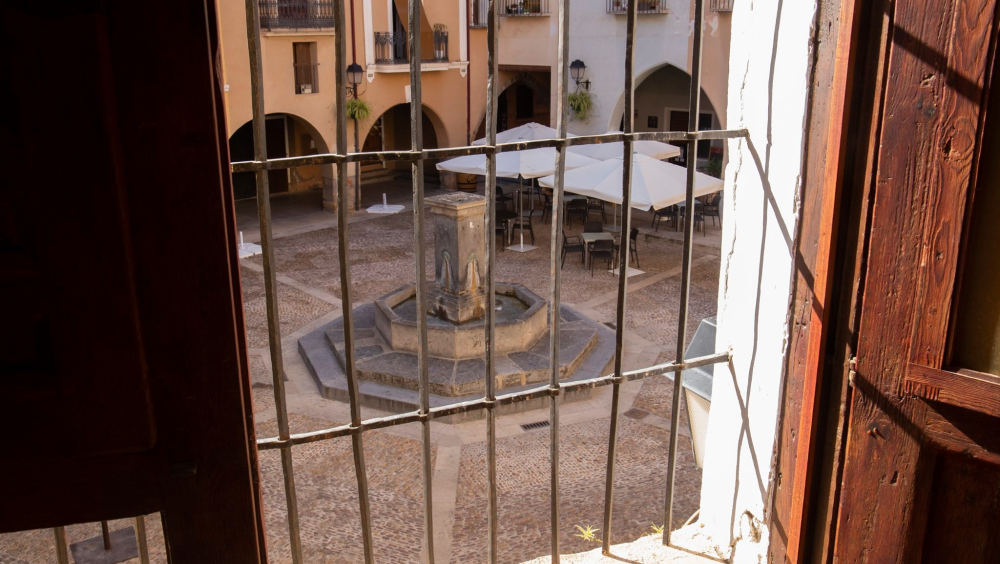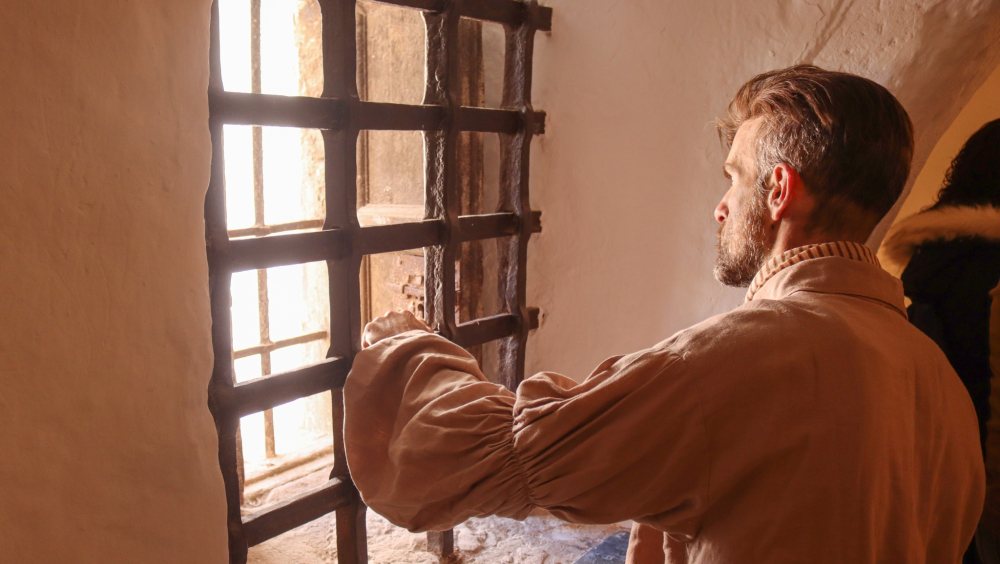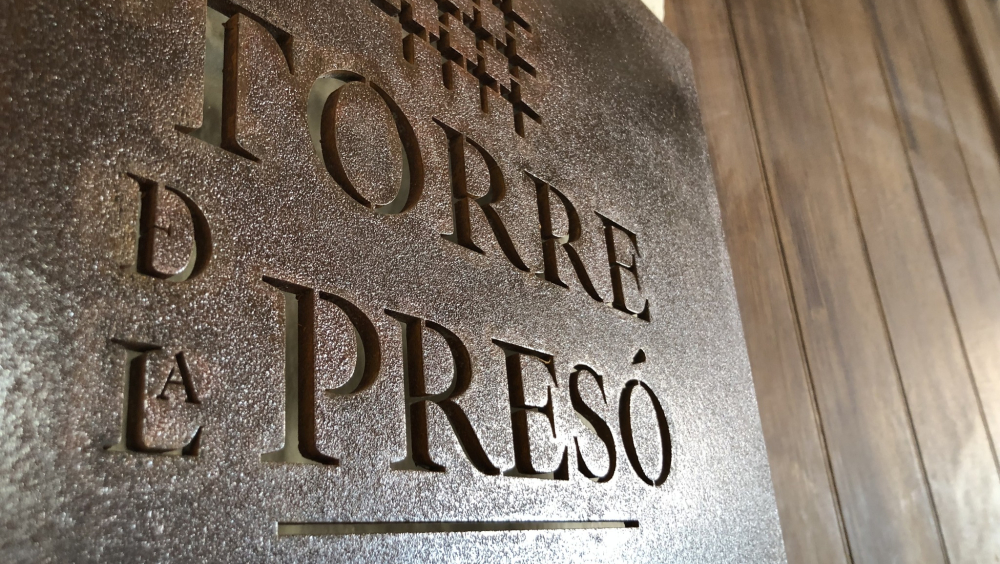500 years of prison and freedom
Who has not heard of prisons? Probably everyone. But surely only a few of us know what goes on inside. On top of that, the cinema and television have created a vision of prisons as places full of conflict, violence and undesirable people who are unlikely to ever return to the real world. Nevertheless, if we look through its few windows or over its walls, we can see that inside, there are only people who, for various reasons, may have committed a crime (or more than one). And there are also professionals who work there, who carry out their duties and help to ensure that these people can return to their homes in the best possible conditions. That would be the function of prison: a school for citizenship or for the promotion of new opportunities.
The “Torre de la presó d'Onda” (Onda Prison Tower) is a building that has been carrying out this function for almost 500 years, according to documents. An engraved stone, part of the building itself, tells us the approximate date of construction: 1560. Since then, and until a few years ago, 1974, this building housed prisoners and convicts. More recently, in 2023, it was adapted for its visit from its very heart, fleeing from the terrible, dark and black vision that we have of prisons in history. The prisoners, the prison officers and other professionals who have lived there have been heard, and they are undoubtedly the ones who know, suffer and feel this transversal reality that has existed and continues to exist today, regardless of the territory or the historical moment. The complexity of the sentence of imprisonment is reflected in the museographic proposal developed in this building.
The renovation and enhancement of the old prison began in 2010 with the restoration of the façade of the building facing the “Font de Dins” square. Later, in 2016, they were resumed through an intervention that removed some inappropriate elements and carried out archaeological work that revealed various graffiti. In 2020, the project was relaunched with the development of a Museological and Museographic Plan, and in 2021, major works began to transform the Onda Prison Tower into a historical and tourist resource for the municipality.
Through the exhibition and selection of the pieces that make up the Onda Prison Tower collections, the aim is to tell the story not only of the building and its nature as a prison and seat of municipal power but also of the population of Onda itself, since the building once housed the functions of the “Casa del Consell” (Town Hall) or “Cort de Justicia” (Court of Justice), the highest governing body of the town and also in charge of the administration of justice. This allows us to get to know the most important historical events and milestones of the city, as well as its protagonists.
Therefore, one of the main objectives is to allow the visitor to discover the city through its history, its prisoners, the application of justice, and its uses and customs, thus contributing to a better understanding of the monumental complex in which the Prison Tower is integrated.
A visit to the building takes approximately 45 minutes, as the content available to the visitor has been synthesised. In fact, during the process of conditioning and enhancing the space, a rigorous selection was made of both the collections and the content in order to create a pleasant experience capable of satisfying the expectations of the public.
It is important to remember that one of the aspects we want to emphasise with the musealisation of this space is the fact that the building itself is a prison, hence the name of the museum. It is the key and defining element of the nature of the museum and, by extension, of the exhibition discourse. Although the museum contains other thematic areas or transversal themes, its condition as a prison constitutes one of the main bases for the visit and the discourse of the exhibition, without prejudice to other aspects derived from the functions performed by the building, as well as, testimonial elements, such as the graffiti on the walls, the cells, its doors and iron fittings, the clock machinery or the architecture of the building.
The “Torre de la presó d'Onda” or Onda Prison Tower operated between the 16th and 20th centuries. Today, during the visit, we discover the functioning of the prison as it was experienced by the prisoners between the 18th and 19th centuries.
The complex consists of two buildings that functioned as one: on the one hand, the tower, built next to the wall and facing the streets of “San Miguel” and “Safona”, and on the other, a house facing the “Almudín” square, which is the entrance to the estate. The itinerary passes through different areas: first through the rooms that housed the administrative part of the prison, located in the house, and then through the area dedicated to the prison itself, situated in the tower.
Regarding the layout of the museum, the first floor is used as a reception area for visitors. Some old photographs of the “Almudín” square show its historical evolution, which is also linked to that of this building. Furthermore, there is a touch-screen panel where you can find more information about your visit and discover other tourist attractions in the municipality.
On the second floor is the interpretation room of the building. Here, visitors can learn about the history of the prison and various aspects related to it. There are also some interpretive panels, an audiovisual area, a room that recreates the prison office and another that served as a bedroom for the mayor or bailiff. The route continues along the stairs that take us to the first area reserved for prisoners, a common room with a latrine where you can see some graffiti left by prisoners on the walls of the cells.
On the third floor, there are two common rooms. One of them, the most interesting, contains the punishment cells reserved for the most dangerous prisoners. It also includes some very interesting graffiti on the walls and a small room with the clock machinery.
The basis of the visit is always the people who lived and worked in the building. The aim is to escape the panic and enforced horror present in most of the adaptations of spaces that were once prisons or detention centres.
Prisons or detention centres are a transversal reality that has existed and continues to exist throughout the European space, regardless of the territory or the historical moment. In the beginning, before the appearance of the detention centres, which were designed to serve deprivation of liberty sentences, prisons were created with the main objective of keeping or guarding the inmates awaiting their trial. This gave rise to the concept of the “custodial prisons”. Later, the concept of “prison” became a place of preventive detention intended for inmates to serve their sentences.
It was not until the 16th and 17th centuries that the idea of having a place where all those people who needed to be corrected for their mistakes could be accommodated began to emerge. At that time, the so-called "houses of correction" appeared, the first in England (the famous Bridewell, 1555) and in what is now the Netherlands.
The creation of these institutions would mean the appearance of the first prisons in history, as we understand them today, because they would not be simple places of detention and imprisonment, but for the first time, they would try to reform these people through work and more humane treatment.
Currently, the UN's Universal Declaration of Human Rights (1948) states in Article 5 that "No one shall be subjected to torture or to cruel, inhuman or degrading treatment or punishment". And in 1984, the United Nations General Assembly adopted the Convention against Torture and Other Cruel, Inhuman or Degrading Treatment or Punishment.
In the almost 500 years of its existence, the Onda Prison Tower has seen all this common evolution (not simultaneous in time) throughout the European area.


